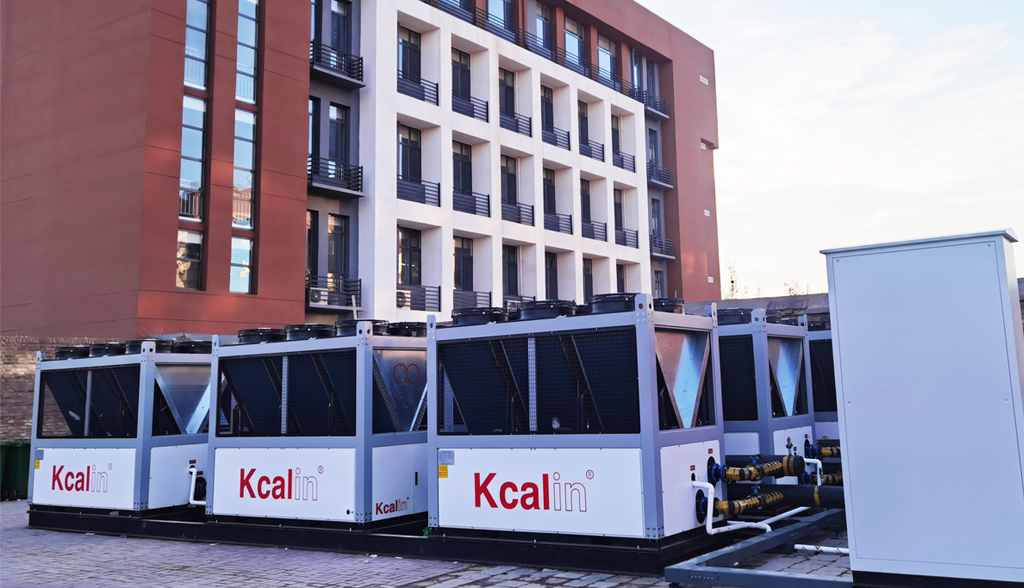With the improvement of people's living standards and the enhancement of environmental awareness, heating methods are also constantly innovating and developing. The traditional centralized heating mode is gradually being replaced by more efficient, flexible, and environmentally friendly distributed heating forms due to its high energy consumption and poor flexibility.
What is distributed heating?
Distributed heating refers to the distribution of heat sources in various heating areas, and independent heating systems can adjust temperature and operating time according to specific needs. Unlike centralized heating, distributed heating does not rely on a single heat source and pipeline system, but rather achieves heating needs for different areas through various small heat source devices (such as wall mounted boilers, ground source heat pumps, air source heat pumps, etc.).
The Efficiency of Distributed Heating
High energy efficiency utilization: Distributed heating systems typically use efficient heat source equipment, such as gas wall mounted boilers, heat pumps, etc., which place greater emphasis on energy efficiency utilization in their design. For example, gas wall mounted boilers can automatically adjust combustion intensity based on indoor temperature to avoid energy waste; Ground source heat pumps and air source heat pumps utilize renewable energy to further improve energy efficiency.

Reducing heat loss: In centralized heating systems, heat needs to be transported through long-distance pipelines to various users, and there will inevitably be heat loss along the way. Distributed heating, due to the direct installation of heat source equipment near the heating area, reduces the loss of heat during transmission and improves energy utilization efficiency.
On demand heating: Distributed heating systems can be independently controlled based on the actual needs of each room. For example, during the day, only the living room and work area need to be heated, and at night, the bedroom can be focused on heating. This on-demand heating method avoids unnecessary energy consumption and further improves heating efficiency.
The flexibility of distributed heating
Personalized settings: The heating needs of each household are not the same, and distributed heating systems can be flexibly set according to the personalized needs of users. Users can independently adjust the temperature and heating time of each room according to their own lifestyle habits and preferences, to meet personalized comfort needs.
Adapt to different building structures: Distributed heating forms are not limited by building structures and are suitable for various types of buildings. Distributed heating can be flexibly applied in new residential buildings, renovation of old residential areas, and commercial office buildings. However, centralized heating systems require complex pipe network layouts and are difficult to adapt to diverse building needs.
Strong scalability: Distributed heating systems have strong scalability. If a new heating demand is added to the home (such as building a new room or expanding a sunroom), simply add a heating device in the corresponding area, which is convenient for expansion. In this case, the centralized heating system requires large-scale pipeline network renovation, which is costly and inconvenient.
Environmental friendliness of distributed heating
Reducing carbon emissions: Distributed heating systems often use low-carbon heat source equipment such as gas and heat pumps, which greatly reduces the emissions of carbon dioxide and other pollutants compared to traditional coal-fired centralized heating. In addition, heat pump systems utilize renewable energy sources such as heat in the air or geothermal energy, further reducing dependence on fossil fuels and lowering carbon footprint.
Support for renewable energy: Distributed heating systems can flexibly integrate various renewable energy technologies, such as solar water heaters, wind power generation, etc. The combination of these technologies can not only reduce operating costs, but also achieve green heating. In contrast, centralized heating systems often find it difficult to integrate multiple forms of energy and have relatively weak environmental performance.
Reducing resource waste: Traditional centralized heating systems often result in energy waste due to long heat transfer distances and inflexible regulation. The distributed heating system, due to the distribution of heat source equipment in various heating areas, can accurately control the heating volume, avoid unnecessary resource waste, and achieve the goal of energy conservation and environmental protection.
Distributed heating has become an important choice for modern heating systems due to its advantages of high efficiency, flexibility, and environmental protection. By adopting excellent heat source equipment and intelligent control technology, distributed heating not only improves energy utilization efficiency and reduces carbon emissions, but also meets personalized heating needs. In the future, with the continuous advancement of technology and the widespread promotion of applications, distributed heating will bring a warm, comfortable, and environmentally friendly living environment to more households and buildings.







Comment